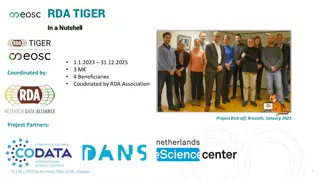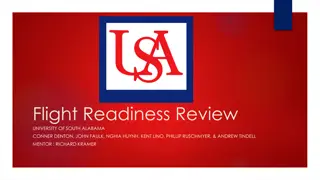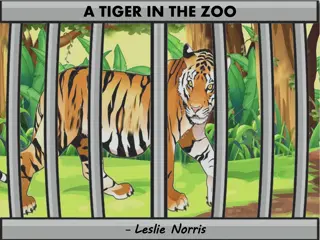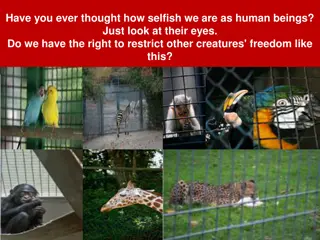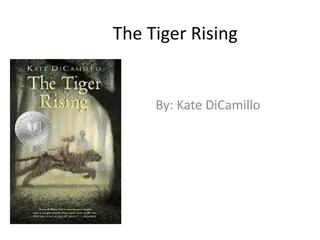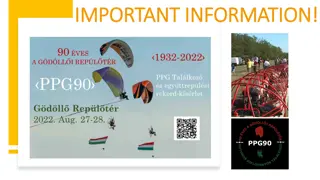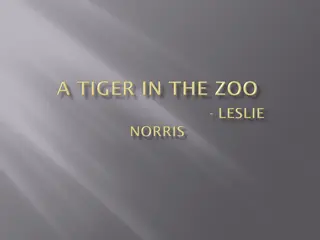The Agony of a Caged Tiger: An Analysis of "First Flight" by Leslie Norris
The poem "First Flight" by Leslie Norris delves into the melancholy existence of a caged tiger in a zoo, portraying the contrast between his natural habitat and his confined reality. The poet eloquently describes the tiger's longing for freedom, showcasing the brutality of keeping wild animals for human amusement. Through vivid imagery and poignant verses, the poem underscores the innate desire of all creatures to live in their natural environment, free from captivity and exploitation.
Download Presentation

Please find below an Image/Link to download the presentation.
The content on the website is provided AS IS for your information and personal use only. It may not be sold, licensed, or shared on other websites without obtaining consent from the author.If you encounter any issues during the download, it is possible that the publisher has removed the file from their server.
You are allowed to download the files provided on this website for personal or commercial use, subject to the condition that they are used lawfully. All files are the property of their respective owners.
The content on the website is provided AS IS for your information and personal use only. It may not be sold, licensed, or shared on other websites without obtaining consent from the author.
E N D
Presentation Transcript
CLASS X FIRST FLIGHT A TIGER IN THE ZOO BY: LESLIE NORRIS
INTRODUCTION The poem written by Leslie Norris explains the agony and helplessness of a caged tiger that lives in a zoo. The poet explains what his life could be if he had been a free animal. The poet has tried to explain about the condition of animals that are caged by human beings for their own fun.
He stalks in his vivid stripes The few steps of his cage, On pads of velvet quiet, In his quiet rage. He should be lurking in shadow, Sliding through long grass Near the water hole Where plump deer pass. He should be snarling around houses At the jungle s edge, Baring his white fangs, his claws, Terrorising the village! But he s locked in a concrete cell, His strength behind bars, Stalking the length of his cage, Ignoring visitors.
He hears the last voice at night, The patrolling cars, And stares with his brilliant eyes At the brilliant stars.
DIFFICULT WORDS 1. Stalks: follows 2. Vivid: bright colored 3. Pads: paws of tiger 4. Rage: anger 5. Lurking: To be hidden as to wait for your prey 6. Snarling: warning sounds made by animals 7. Baring: uncovered 8. Fangs: Sharp tooth of animals 9. Concrete: building made of bricks, cement, sand and water 10.Patrolling: to guard, to vigilate
He stalks in his vivid stripes The few steps of his cage, STANZA 1 On pads of velvet quiet In his quiet rage. EXPLANATION The tiger moves here and there in his cage. The strips on his body are of strong bright colors. He is full of rage but is quiet because he knows that he is helpless here.He further says that the tiger can take only a few steps because the cage is small. The tiger tries to control his anger by quietly walking in the limited area of his cage.
He should be lurking in shadow, Sliding through long grass STANZA 2 Near the water hole Where plump deer pass. EXPLANATION The poet is filled with pity. He says that the poor tiger should be in his natural habitat. Then at this point of time he would have been lying in the shadows of trees and sliding quietly through the long grass to catch a deer. The poet wants to say that the actual life of a tiger is to live in jungle where he could catch his prey and eat it but the tiger in the cage can not do so.
He should be snarling around houses At the jungle s edge, Baring his white fangs, his claws, Terrorising the village! EXPLANATION The poet says that if the tiger would have been free, he would have snarled around the houses located at the outskirts of the forest. He would terrorise people with his sharp tooth and claws. This would create fear among the people living in the villages. STANZA 3
But hes locked in a concrete cell, His strength behind bars, STANZA 4 Stalking the length of his cage, Ignoring visitors. EXPLANATION The poet sees the tiger trapped in a concrete cell in the zoo. He is imprisoned behind the bars. He ignores the visitors who came to zoo to have a look at him. He just stalks in the cage. He never tries to terrorise the visitors because his power is restricted by the cage.
He hears the last voice at night, The patrolling cars, STANZA 5 And stares with his brilliant eyes At the brilliant stars. EXPLANATION The poet says that in the night, the tiger hears the sounds of the patrolling cars. Patrolling cars are the vehicles of police which are used to guard at night. He then stares at the shining stars with his shining eyes. The poet wants to say that the tiger is sad and as he is confined in the cage, he cannot do anything. Therefore, he stares at the stars in the night and tries to divert his thoughts towards them.
THEME The poet compares the life of a tiger in the Zoo with its life in its natural habitat. The poet conveys an important message that the wild animals should be kept in their natural habitat. In zoo animals feel angry, helpless and unhappy and remember their life and environment in the forest. The poet effectively portrays the hardships of animals in the cage and humans should undertsand that animals should be kept in their natural environment only.










